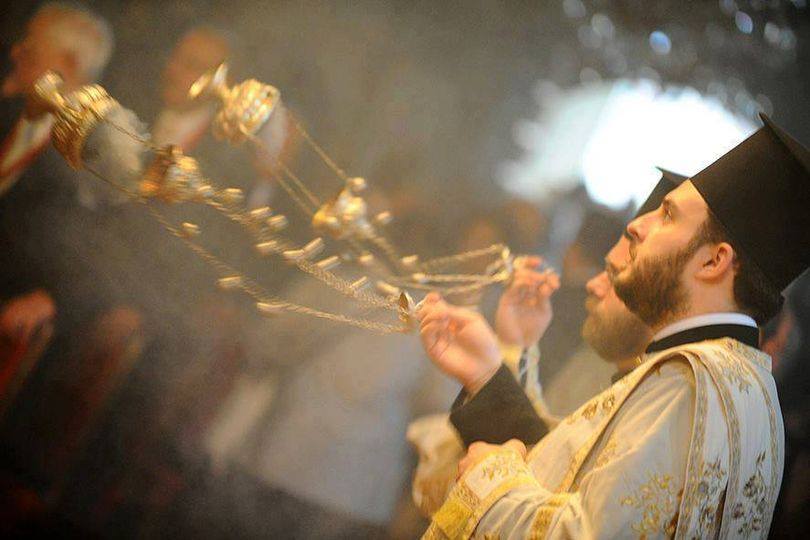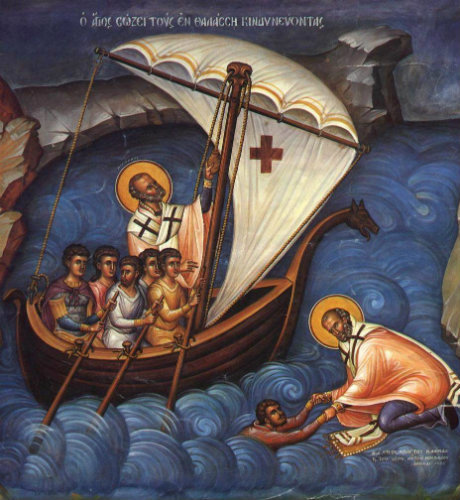“In our sickness we need a savior, in our wanderings a guide, in our blindness someone to show us the light, in our thirst the fountain of living water which quenches for ever the thirst of those who drink from it. We dead people need life, we sheep need a shepherd, we children need a teacher, the whole world needs Jesus!” –St. Clement of Alexandria
Forward in Orthodox-Catholic Relations
Here is a very interesting and important conversation among the Orthodox and Eastern Catholics. I’d also include in my descriptors is beautiful. This particular presentation is the first of the Huffington Ecumenical Institute online lecture series addressing issues, obstacles, and ways forward in Orthodox-Catholic relations.
The host is Sr. Vassa Larin of “Coffee with Sr. Vassa.”
The lecture’s participants:
Fr. Cyril Hovorun (Loyola Marymount University)
Fr. Mark Morozowich (Catholic University of America)
Something greater to come
On this Third Sunday of Advent —Gaudete Sunday—, or the Sunday of the Forefathers (as it is called on the Byzantine liturgical calendar) we have some things to consider.
As friend drew my attention to Dietrich Bonhoeffer’s reflection on Advent which really caused me to think about the state of my soul. Complacency (mediocrity) is an enemy to one’s preparation to receive the Newborn Lord at Christmas. Of course, Gaudete Sunday with its exhortation to rejoice is has its own strength to mind. Here’s what Bonhoeffer said: “The celebration of Advent is possible only to those who are troubled in soul, who know themselves to be poor and imperfect, who look forward to something greater to come. For these, it is enough to wait in humble fear until the Holy One himself comes down to us, God in the child in the manger. God comes. The Lord Jesus comes. Christmas comes. Christians rejoice!”
Right now I am feeling troubled of soul, poor and imperfect; sin has taken over and there is a need for reconciliation. Perhaps you are feeling something similar. The sacred Liturgy of the Latin Church for Gaudete Sunday teaches us something we need to bring to our discernment of things. Deep down in my being I know that I need to be humble in fact, and not merely as an abstraction. Deep down in my being I desire “to attain the joys of so great a salvation” known affectively “with solemn worship and glad rejoicing” through the beauty of living reality as it is and not as I want it to be. Deep down in my being I want “something greater.” I want to the Lord.
Moving through the Nativity Fast that is observed by the Byzantine Church preparing for the newborn Lord, we acknowledge and desire that what the martyrs experienced, “in their struggle,” we may “receive an incorruptible crown from you.” And that “With your strength, they brought down the tyrants and broke the cowardly valor of demons.”
I can tell you from experience that the struggle against the demons is difficult. What I also know is that only God’s grace and the companionship of others makes it possible to receive the gift of the incorruptible crown.
Bonhoeffer names the truth for us that ought not be missed in the season’s chaos —our looking forward to something greater to come: “Holy One himself … God in the child in the manger.”
May we know the substance of what the priest prays: “that with this divine sustenance [the Gospel proclaimed and preacher AND Eucharist] may cleanse us of our faults and prepare us for the coming feasts” (The Prayer after Communion).
May St. Benedict guide us.
St Nicholas
The Troparion for today’s feast of the great St Nicholas, wonderworker, teacher, model of sanctity and bishop reads:
Nicholas, holy hierarch, your flock has recognized you by the brilliance of your works. You are a model of kindness and rule of faith, a teacher of self-control. Your lowliness has raised you to the heights of fame, and your poverty has filled your hands with riches. Beg Christ, our God, to save our souls.
Nicholas has captured the imagination of many through the years because of charity which morphed into gift-giving. He’s not remembered in popular culture as a teacher of the Christian Gospel, the bishop who faithfully served the Divine Mysteries, for saving the innocent from death, and for calming storms nor challenging the false teachers. And yet, he’s more than all these things. He allowed the Lord to speak eloquently through his life and thus comes to us in 2020 as a friend and disciple of the Lord Jesus.
Would that we could live and act as Nicholas did in the face of false teaching by a life of virtue and charity, by worthily receiving the Divine Mysteries. Nicholas is asked to beg Christ to save us. May we, in fact, have our sins forgiven and be brought one day into perfect communion with the most holy Trinity.
St Francis Xavier
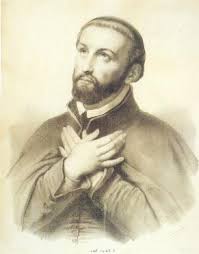 Francis Xavier has always held a special place in my heart. Being on mission is a singular grace given to for the sake of the Kingdom.
Francis Xavier has always held a special place in my heart. Being on mission is a singular grace given to for the sake of the Kingdom.
One of his biographers, Fr. Georg Schurhammer, SJ, has a 3 volume biography of Xavier that is quite moving and beautiful. Without exaggeration he is the greatest missionary Christianity has ever seen outside of St. Paul the Apostle. As the collect of his Mass says below, may we all be gifted with the zeal for the faith that he had!
“O God, who through the preaching of Saint Francis Xavier won many peoples to yourself, grant that the hearts of the faithful may burn with the same zeal for the faith and that Holy Church may everywhere rejoice in an abundance of offspring. Through our Lord Jesus Christ, your Son, who lives and reigns with you in the unity of the Holy Spirit, one God, for ever and ever.”
St Catherine of Alexandria
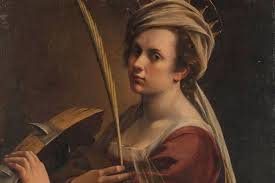 Today’s patron saint of students, philosophers, lawyers, librarians, and unmarried women is liturgically venerated by the Latin Catholic Church. St Catherine of Alexandria has a remarkable following even with a sparse historical of her life. One will recall that she was banished from the Roman liturgical calendar at the reform of the calendar in the 1960s. As a well formed Benedictine monk said, “God measures our prayer by its sincerity, not by the historical accuracy of our knowledge!” Though banished now re-instituted by John Paul II in 2004 as an optional memorial. Catherine is included in the group called the Fourteen Holy Helpers.
Today’s patron saint of students, philosophers, lawyers, librarians, and unmarried women is liturgically venerated by the Latin Catholic Church. St Catherine of Alexandria has a remarkable following even with a sparse historical of her life. One will recall that she was banished from the Roman liturgical calendar at the reform of the calendar in the 1960s. As a well formed Benedictine monk said, “God measures our prayer by its sincerity, not by the historical accuracy of our knowledge!” Though banished now re-instituted by John Paul II in 2004 as an optional memorial. Catherine is included in the group called the Fourteen Holy Helpers.
St Catherine had reputation of learning. Tradition says that she defeated in debate fifty pagan philosophers assigned to her by the Roman emperor. The philosophers then embraced Christian faith and preceded Catherine in martyrdom. Iconography of Catherine included a spiked wheel on which she would have suffered death for Jesus Christ –except that it broke apart upon touching the saint. She was then beheaded.
An alive and thriving monastery today named in Catherine’s honor, the sixth century monastery was built on the site said to be where Mount Sinai was located. There rest her relics and an extraordinary collection of manuscripts and incredible icons. And by the way, those manuscripts are being preserved with the help of the Benedictines at St John’s Abbey in Minn.
My friend the Benedictine monk referenced above says, “She also played an indirect role in the Hundred Years War, by being one of the three saints (the others were St. Margaret and the Archangel Michael) to appear to the peasant girl who became France’s St. Joan of Arc. The trio of saints allegedly inspired Joan to the mission that played so large a role in the survival of a France independent of the English crown.”
While it may be true that Catherine’s historical path is a bit scant, historical biography is not the key we have in the saints. As John Paul realized the mistake of the liturgical reformers was to concentrate on an overly intellectualized approach to the spiritual life. Generations of Christians –nearly 1500 years worth– have a strong devotion to Catherine. Saints show us a path to Christ that is certain; saints like Catherine show us the face of Christ crucified and risen. Hers is a discipleship I am interested in imitating.
St Catherine, pray for us.
Bees in the Levant, rendering leaf fat and the Requiem
It’s a beautiful Saturday in November with the sun, the smell of autumn in the air, prep for Thanksgiving and mild temps at 64. For Connecticut, this a blessing.
A friend sent me a NY Times article on Turkey’s bees. Grateful, I am, for several reasons. I like to know what other cultures do in beekeeping, e.g., the Turks, the Armenian Turks, and the peoples of the Levant (Lebanon, Syria, & Palestine). Greece, too. They have different methods and different tasting honey. At a friend’s funeral a few weeks ago I was speaking with 2 Eastern Catholic bishop-friends who were present and we got into talking about bees, honey and helping the poor farmers of Lebanon and Iraq in beekeeping. Helping farmers with beekeeping in this part of the world is a good project. Something similar that I want to do with the Benedictines in parts of Africa.
The house is filled with a beautiful pork aroma. I rendered for the leaf lard from last year’s pigs so that my mother can use the lard in baking and frying. Don’t confuse the leaf fat that comes from around kidneys with the back of a pig. I have to say I am glad I am Catholic with an appreciation of raising pigs and using most of the bits of the pigs. Rendered leaf lard the best lard around.
We had our annual St Gregory Purgatorial Society Mass today: a solemn high Traditional Latin Mass. The ceremonial is very different from the ordinary way of the Latin Mass and the music beautiful. Nearly 200 names enrolled in the Society enjoy several spiritual benefits. The benefactors are quite generous in financial things that fund some of the sacred music program.
After the Divine Liturgy tomorrow I am visiting a young man and his family who raise the Mangalitsa pig. A beautiful pig with curley hair renown for its pork and lard. It was THE pig from the Hungary, Serbia, Czech Republic, Austria among some countries that fed lots of people. In former times this pig was excellent for sausage and now certain chefs are using the meat for chops and roasts, etc. Hence, we’ll have 2 heritage breeds of pig next year: the Mangalitsa and the Berkshire.
Have a beautiful of Saturday!
St Mechtild of Mageburg
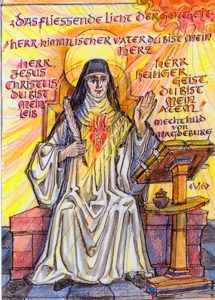 In one week we have two diamonds in the crown of Benedictine (Cistercian) sanctity: St Gertrude and today, St Mechtild of Magdeburg (c.1210 – 1280).
In one week we have two diamonds in the crown of Benedictine (Cistercian) sanctity: St Gertrude and today, St Mechtild of Magdeburg (c.1210 – 1280).
The witness of St Mechtild is striking because it conveys a personal experience with the Lord. Far being abstract and vague, Mechtild relates her experience of the love she and God shared. These experiences are what we all are after in our relationship with the Lord. Mechtild’s biography notes that she was 12 when these mystical experiences began. When she was 18 she joined a community of Béguines. After forty years, she moved to the Cistercian convent of Helfta. Her prose showed poetic sensitivity in direct and simple language.
In another place I wrote of St Mechtild, “According to some scholars, this Cistercian-Benedictine nun and poet, theologian and mystic was the inspiration of Dante’s Divine Comedy. Interesting that her liturgical memorial comes at the end of the liturgical calendar given her visions of heaven, hell and purgatory! Some people register a doubt about her status as a canonized saint in the Church but she is remembered in the Roman Martyrology (2004) and venerated as such by many, including the Cistercian-Benedictines and that’s good enough for me. The Martyrology speaks of Saint Mechtild as a woman of exquiste doctrine and humility, and supernatural gifts of mystical contemplation.”
The words in the picture mean:
Das fliessende Licht der Gottheit
The flowing light of the Godhead
Herr himmlischer Vater, du bist mein Herz.
Lord Heavenly Father, you are my heart.
Herr Jesus Christus, du bist mein Leib.
Lord Jesus Christ, you are my love.
Herr Heiliger Geist, du bist mein Atem.
Lord Holy Spirit, you are my breath.
– St Mechtild von Magdeburg
Picture: (c) Initiativkreis Kloster Helfta.e.V. Durach
Leonid Fyodorov “Between Truth and Darkness”
A friend of mine shared with me the trailer of Exarch Leonid Fyodorov “Between Truth and Darkness” (2012). From what I can it is fascinating piece of work introducing us to a rather unknown person in contemporary church history but a giant in ecclesial circles. As bishop for the Russian Byzantine Catholics he energetically took up his mission until government authorities persecuted him.
The Russian Byzantine Catholics are a minority and they are worthy of our knowledge of them and for our fraternal support. Pray for the re-establishment of the Eparchy for the Russian Byzantine Catholics. The Holy See seems to be deaf to this request.
Benedictine All Souls
Benedictine All Souls
Surely you see the parallels with the established tradition of All Saints and All Souls in the Latin Church. Being that the Catholic Church is a communion of churches and traditions, there is a plethora of observances. The Benedictines, like other “major” religious orders have days to recall before their holy ones and their faithful departed (not just their dead).
Today is a good day to recall the eschatological hope that we profess to have (cf. the Creed) as faithful disciples of the Lord of Life.
We pray,
Almighty God, creator and redeemer of all the faithful, grant the souls of your departed followers of St Benedict forgiveness of all their sins… may they obtain the pardon that they have always desired.
Today, let’s recall with certain docility the promise St Benedict presses into our hearts that together we come to eternal life in the Trinity (cfr. RB 72,11-12).
A previous post on the topic.
